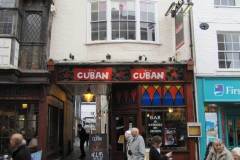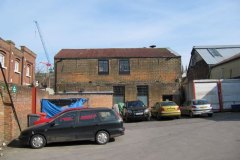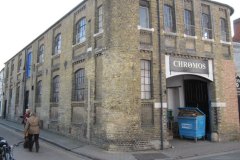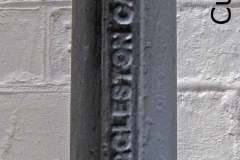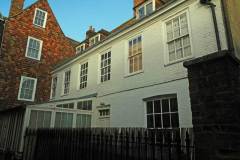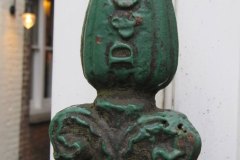The Canterbury business H M Biggleston & Sons (trading earlier as Drury & Co, then Drury and Biggleston) produced iron castings in Canterbury from 1835 until the final closure of the foundry in 1963. The business worked at several sites – in Crown Yard (Image 1 behind the Cuban Restaurant off High Street) and on Jewry Lane and Whitehorse Lane (Images 2 and 3). In the alley by the Cuban restaurant, two posts stand at the entrance to the old works (Image 4). These are in superb condition as they have been protected from rain, wind and cold.
The family home for some of this time was the 18th century house by the main foundry facing Crown Yard (Image 5). The 1841 census shows the family living here. The railings around this house reflect the name of the original business Drury & Co (Image 6).
Output from the foundry sites included railway girders and bridgework (for the South East Railway 1846), the original metal bridge over Riding Gate (replaced in 1970 and today in use at Heathfield Safari Park), ironwork for the first attempt at a Channel Tunnel (1880), munitions work in both World Wars, and hundreds of lamp posts and railings used across Canterbury city. Six generations of the Biggleston family were involved in the business, descendants of William Henry Biggleston who arrived in Canterbury in 1835 and stayed at the Chance Inn in Dover Street – now rebuilt several times.

